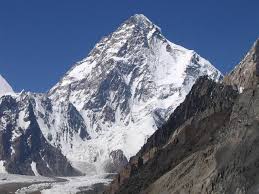“You can’t depend on your judgment when your imagination is out of focus.”
-Mark Twain
Do you know those foreground / background pictures meant to trick your eye and fool your perception – the ambiguous images with a contrast of dark and light that can be interpreted in more than one way? One of the most famous foreground -background contrasting pictures is the old woman wearing a cloak or the young woman with the feather in her hat. Another is the “Rubin vase” where the multiple perceptions are either the vase or the silhouette profile of two people facing each other.
The sobriety date or “sobriety anniversary” in the marriage impacted by sexual addiction can be very similar in that way. Sobriety dates have measure and meaning for the addict. The date marks the progress of their recovery and can be a quantifiable measure of their hard work in recovery.  For the spouse, the anniversary date often marks the anniversary of discovery. The date marks the beginning of understanding that all they thought was, really wasn’t as it appears. The date marks the transition into a phase of trauma, uncertainty, and feelings of a lack of safety.
For the spouse, the anniversary date often marks the anniversary of discovery. The date marks the beginning of understanding that all they thought was, really wasn’t as it appears. The date marks the transition into a phase of trauma, uncertainty, and feelings of a lack of safety.
Often the addict is very proud of their anniversary and does not understand why their spouse can’t share in their joy and observe the date in the same way. The anniversary is marked with a “chip” or “coin” in 12-step programs. Chips are handed out with ritual in the fellowship hallways to give their brethren members hope, strength, and sustenance for the long road of recovery. It is a time of celebration.
Unfortunately for the spouse there is little feeling of congratulations or celebration, especially in the very early years of recovery. Somewhere down the road when trust is regained, repair to the relationship happens, and sustained recovery is achieved – a spouse might feel differently, but early on it is very difficult to make out that contrasting shape as in the foreground / background pictures.
Another paradox of recovery is that the marriage has taken quite a blow but a couple can’t be each other’s first resource in the pain of early recovery. Trust is shattered and often one begins to realize that there were strong deficits in the foundation of the marriage. A couple will often scramble to try and restore trust and intimacy but do not have a set of tools to help rebuild their new marriage in any other way than the way they built their old marriage. Additionally, while they should turn towards each other in intimacy, they often can’t because reactivity to each other is so high. This reactivity to each other undermines the shaky foundation even more. The couple need to process their pain but often can’t do it safely for that reactivity and deficit of skills.
Building a therapeutic team (individual therapists for each person with a separate couples therapist) having a support network of recovery peers, complete with a sponsor for each partner, can be the safe sounding boards to process the raw emotions that surface for addict and spouse alike. Processing the raw emotional feelings with someone who can truly hear without defense helps one calm their brain often firing in flight-fight-freeze mode. In this process of being heard without judgment, one can feel connected to, which helps lower the flight-fight-freeze survival activity in our brain. Being heard without reactivity or judgment allows one a better chance to get out to the forebrain and think what one needs to do, or ask for. Learning how to process the raw emotions, without reactivity and shape into palatable / functional ways our spouse can hear, can help the couple stay in dialogue to do the repair work in their marriage. I say often to couples: “one may not like the things one is talking about in recovery, but often the couple is now learning how to talk about the things they have needed to talk about” (often for years). In reactivity the dialogue stops, avoidance continues and issues remain unresolved. When the dialogue can continue functionally, and couples can stay turned towards each other and work through resolving the pain in functional packages, spouses can hear each other, which helps get them further down the road of recovery.

 Goals and New Year’s resolutions are great for vision, but lack the mechanics to get one to successful completion.
Goals and New Year’s resolutions are great for vision, but lack the mechanics to get one to successful completion.  One knows they cannot continue as they are, but in quandary about how to get out of the disease and never ending cycle of addiction.
One knows they cannot continue as they are, but in quandary about how to get out of the disease and never ending cycle of addiction. 

 One of my favorite scenes is when the little girl, played by Natalie Wood, after trials, tribulations and nay-sayers regarding
One of my favorite scenes is when the little girl, played by Natalie Wood, after trials, tribulations and nay-sayers regarding 
 If one hasn’t broken a bone, one can continue to ride. Many get up battered, bruised and bandaged, but then continue on towards their goal. Paulo Coehlo noted in his book The Alchemist: It does not matter if you fall, but what truly matters if you fall down 7 times, be sure to get up 8! Successful recovery will have moments of falter. Get back up, dust yourself off, and get back to the basic drills that you learned that keep you safe. Know, observe, and accept your limits, but don’t stop training.
If one hasn’t broken a bone, one can continue to ride. Many get up battered, bruised and bandaged, but then continue on towards their goal. Paulo Coehlo noted in his book The Alchemist: It does not matter if you fall, but what truly matters if you fall down 7 times, be sure to get up 8! Successful recovery will have moments of falter. Get back up, dust yourself off, and get back to the basic drills that you learned that keep you safe. Know, observe, and accept your limits, but don’t stop training.
 That is true of boundaries in the marital repair process. Boundaries are fences that one erects to create safety so that paradoxically partners can move towards each other. The betrayed spouse has learned there has been a lot that has been hidden. An addict entering recovery will develop a plan of safety with their program and sponsor. Eventually, it would be helpful for the addict to begin to communicate what they are doing in early recovery as part of their program. Additionally the betrayed spouse will create their boundaries to help facilitate their own “rules of continued engagement” for safety. An example would be from the addict side of things: I have severed all relations with former affair partners, I commit to doing 90 meetings in 90 days, I agree to meet with my sponsor weekly, I make two phone calls to program peers to check in daily. In communicating this to their betrayed spouse, they are in essence communicating what it is their recovery program and what a contract to sobriety looks like. From the betrayed spouse side of the house boundaries might be to request non-contact with affair partners, no pornography in the house, or require a test for sexually transmitted diseases. They too can communicate things they are willing to do for their own support programs as well. My experience is early on, depending on the spouse, being part of a 12-step fellowship can be too overwhelming and sometimes further traumatizing. I encourage people to not “go it alone” but get plugged in to therapy or a supportive community as soon as possible. These suggestions are only meant to be examples. Depending on the acting out behaviors, one’s own need for safety, and the input of a recovery team, each person’s initial boundary plan and boundary needs will look differently.
That is true of boundaries in the marital repair process. Boundaries are fences that one erects to create safety so that paradoxically partners can move towards each other. The betrayed spouse has learned there has been a lot that has been hidden. An addict entering recovery will develop a plan of safety with their program and sponsor. Eventually, it would be helpful for the addict to begin to communicate what they are doing in early recovery as part of their program. Additionally the betrayed spouse will create their boundaries to help facilitate their own “rules of continued engagement” for safety. An example would be from the addict side of things: I have severed all relations with former affair partners, I commit to doing 90 meetings in 90 days, I agree to meet with my sponsor weekly, I make two phone calls to program peers to check in daily. In communicating this to their betrayed spouse, they are in essence communicating what it is their recovery program and what a contract to sobriety looks like. From the betrayed spouse side of the house boundaries might be to request non-contact with affair partners, no pornography in the house, or require a test for sexually transmitted diseases. They too can communicate things they are willing to do for their own support programs as well. My experience is early on, depending on the spouse, being part of a 12-step fellowship can be too overwhelming and sometimes further traumatizing. I encourage people to not “go it alone” but get plugged in to therapy or a supportive community as soon as possible. These suggestions are only meant to be examples. Depending on the acting out behaviors, one’s own need for safety, and the input of a recovery team, each person’s initial boundary plan and boundary needs will look differently.

 Food companies have long known about the “trifecta sweet spot” of the right amounts of sugar, salt, and fat to release optimal dopamine hits in the brain.
Food companies have long known about the “trifecta sweet spot” of the right amounts of sugar, salt, and fat to release optimal dopamine hits in the brain. 

